An amateur astronomer using a homemade 25 cm (10 inch) telescope has recorded an exquisite image of a nearby star and surrounding planetary disk. Beta Pictoris is 63 light-years away and resembles a slightly more massive, hotter version of our sun and primeval solar system in the early stages of planetary formation. The New Zealand star-gazer, named Rolf Olsen, posted the image along with a brief explanation of his technique which has rocketed around the science cyber-sphere:
(Link) — For the last couple of years I have been wondering if it was possible for amateurs to capture this special target but have never come across any such images. The main difficulty is the overwhelming glare from Beta Pictoris itself which completely drowns out the dust disc that is circling very close to the star. Images of the disc taken by the Hubble Space Telescope, and from big observatories, are usually made by physically blocking out the glare of Beta Pictoris itself within the optical path.
Beta Pictoris looks like a relatively normal, hot young star through most telescopes.
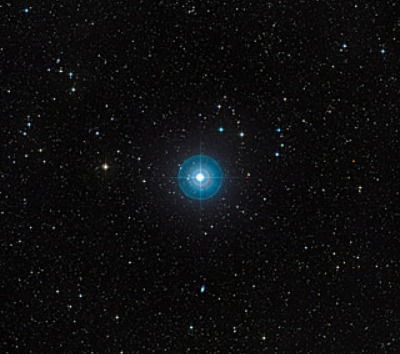
An optical image courtesy of the ESO of Beta Pictoris reveals a relativey normal, young, blue-white star.
Closer examination in the 1980s indicated the star was in the middle of a wide ring of debris. In 2003 Hubble snapped the fascinating images below clearly showing the disk[s] edge on.
Other images show what appears to be at least one large planet or brown dwarf forming closer in and possibly clearing debris out of that wide ring in the process.
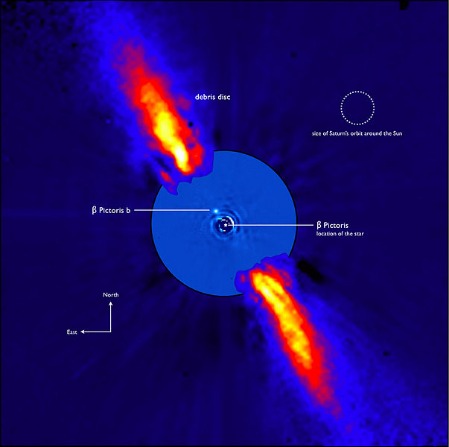
Beta Pictoris A and the much smaller Beta Pic B. B is thought to be an early stage large planet or a brown dwarf. Image credit ESO
What might the busy system look like to Star Trekkers sailing into it for the first time from the vantage point of say, where Neptune or Pluto might be in our own solar system? Above the vast plain of debris, lit by BetaP’s brilliant light, it would be gorgeous.
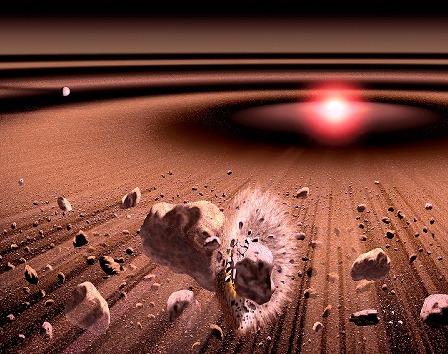
A collision between asteroids as they orbit Beta Pictoris. Observations have pinpointed three dusty belts orbiting this star, along with a possible planet. Image credit: ISAS/JAXA
In 2006 NASA found prodigeous amounts of carbon gas in the ring. CO2 gas and ices could perhaps lend the system a golden sheen that would put Saturn to shame.
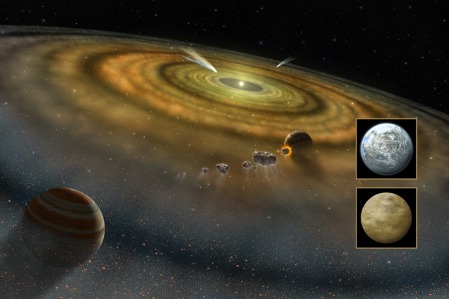
NASA's Far Ultraviolet Spectroscopic Explorer, or FUSE, detected vast quantities of carbon gas. Image credit NASA/FUSE
Lots of carbon means at least one of the building blocks of life — or perhaps scaffold of life would be more accurate — is present in large quantities in the BetaP system. Some planetary astronomers speculate that diamond planets could form in such a place. A hypothetical diamond world is illustrated below, where the looser carbon dust and soot have been eroded away by small impacts, exposing a layer of diamond bedrock polished by micrometeors swept up from the debris ring, all shining softly under dancing aurora energized by BetaP.

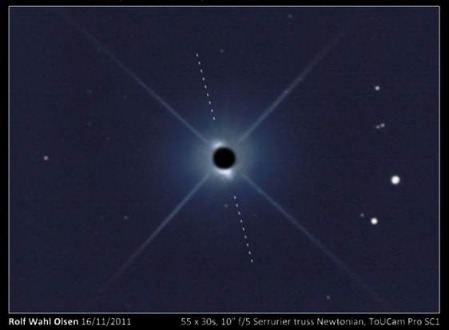
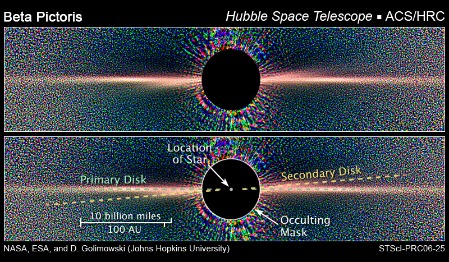
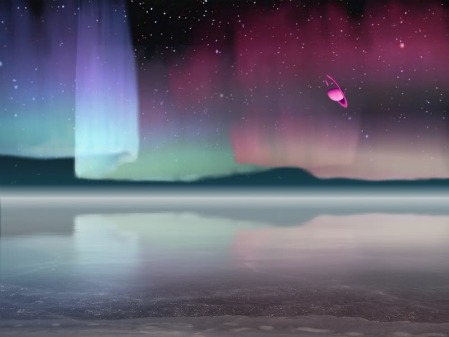
Leave a Reply
You must be logged in to post a comment.